June is National Indigenous History Month in Canada, a time to honour the history, heritage and diversity of Indigenous peoples in Canada. Now more than ever, it’s important to amplify Indigenous voices, experiences, and stories, and to acknowledge the lived truths of Indigenous peoples, including those of our BCIT students, alumni, and instructors. The following are a few examples of how Indigenous peoples in Canada from the BCIT community have shared their vibrant stories and made a difference.
1. BCIT Indigenous Student Champions: Supporting peers on their educational journey
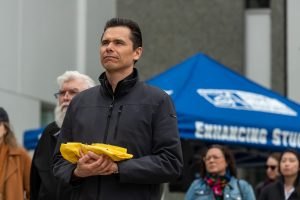
As a proud Anishinaabe, Desmand King is keen to share and talk about his Indigenous heritage with those around him. During his first day on the BCIT Burnaby Campus, Desmand discovered the Indigenous Gathering Place.
Desmand’s dedication to the Indigenous Gathering Place and his warm personality earned him the position as one of three BCIT Indigenous Student Champions.
An Indigenous Student Champion is a guide and a knowledgeable resource that assists fellow students (Indigenous mentee) in developing strategies to succeed in their post-secondary education. They are a senior student, second semester and above, who is available to give their time and apply their skills to positively impact a new student’s post-secondary experience.
2. BCIT alum Justin Perry mitigates BC wildfires using drone technology
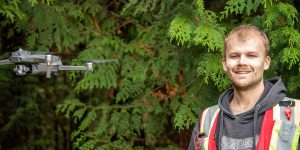 What started out as a passion for both aviation and forestry ended up leading BCIT alumnus Justin Perry to his dream job. As Chief Drone Pilot with Stinson Aerial Services Inc., he detected wildfires using infrared sensing technology during the intense summer fire season in BC.
What started out as a passion for both aviation and forestry ended up leading BCIT alumnus Justin Perry to his dream job. As Chief Drone Pilot with Stinson Aerial Services Inc., he detected wildfires using infrared sensing technology during the intense summer fire season in BC.
Justin’s role as a drone pilot was the perfect opportunity to combine the skills he learned in the BCIT Forest and Natural Areas Management diploma program and his interest in drone technology.
3. Lillooet Tribal Council partners with BCIT to bring cultural teachings into new Office Fundamentals program
A BCIT partnership with the Lillooet Tribal Council brings culture — and laughter — into the classroom, and beyond.
“Try to bring it out with humour. Make them feel comfortable,” says St’át’imc elder from Qaqy’ten/Sekwel’ and language teacher Linda Redan. “It drops that wall and they start to remember what they’ve heard from other people, what they’ve heard from other Elders or their grandparents, and it starts to come out.”
For the past few months, Linda has been sharing wisdom and humour with students — along with valuable lessons in tradition, storytelling and language — as part of a course created collaboratively by the Lillooet Tribal Council (LTC) and BCIT: Cultural Teaching (XCUL 1001).
“Every class started by lighting a candle. When students enter a classroom, students have tension,” observes Linda. “The flame takes away their tension and helps them to be calm so they can instill what the teacher is teaching.”
This helped foster an open and supportive learning environment.
4. Indigenous trades grad creates a new start to a better future
 Victoria Dupuis had been supporting herself working full time since she was 15. Feeling burned out from working as a professional cook for 15 years, she worried that her options were limited because she did not graduate high school traditionally. It was by coincidence that Victoria met a female welder at a mutual friend’s baby shower, and her interest in welding was immediately sparked. With support from Indigenous Services, Victoria is now a proud alumna of the BCIT Welding Foundation program working full-time in her field at Fabwell Industries.
Victoria Dupuis had been supporting herself working full time since she was 15. Feeling burned out from working as a professional cook for 15 years, she worried that her options were limited because she did not graduate high school traditionally. It was by coincidence that Victoria met a female welder at a mutual friend’s baby shower, and her interest in welding was immediately sparked. With support from Indigenous Services, Victoria is now a proud alumna of the BCIT Welding Foundation program working full-time in her field at Fabwell Industries.
 5. From structures to communities, this Indigenous BCIT ironworking alum looks to a brighter future
5. From structures to communities, this Indigenous BCIT ironworking alum looks to a brighter future
Brandon Darbyshire-Joesph is a big believer that “every generation can do better.” The BCIT Ironworking alumnus’ passion for creating positive change was forged from a family history pitted with challenges, from the after effects of surviving residential school (his grandmother), to divorce (his parents), to the reality of racism in Canada (Brandon himself). All the while, Brandon knew an education and hard work would open up opportunities, transforming life for the better. Brandon attended the BCIT Ironworker program and later became the first First Nations person in BC to earn his Red Seal certification. Now, as a member of the Squamish First Nation council, he encourages Indigenous youth to consider careers in the trades.
 6. BCIT Machinist alumna’s path to a successful career took resilience and ACCESS
6. BCIT Machinist alumna’s path to a successful career took resilience and ACCESS
BCIT Level 4 Machinist alumna Jazmine Morrison applied to the Machinist program and received a scholarship for admission with support from ACCESS, the Aboriginal Community Career Employment Services Society. While she encountered a series of challenges during her time at BCIT, including balancing studying with being a single mom and caring for her grandfather, Jazmine says she got through it with the support of her family, and continued support with financial aid and resources for tutoring from ACCESS.
 7. More than just a job: How a BCIT alumna is amplifying Indigenous voices and stories
7. More than just a job: How a BCIT alumna is amplifying Indigenous voices and stories
BCIT alumna Savannah Minoose-Erasmus says she went into the BCIT Broadcast and Online Journalism Diploma with the goal of amplifying Indigenous voices and stories. Upon graduating, Savannah was hired as a Project Coordinator with the Indigenous Youth Wellness Team at the Provincial Health Services Authority where, pre-COVID, she travelled to small communities facilitating culturally relevant wellness projects like music or dance workshops. She also works on the Indigenous wellness podcast Teachings in the Air, providing traditional stories, lessons, and cultural knowledge to people in order to inspire, motivate, and empower Indigenous peoples. Savannah is a Cree-Metis storyteller, content creator, and journalist from Kikino, Alberta.
 8. Forging paths: $1M donation from Gene Haas Foundation paves the way for BCIT students through faculty like Indigenous Red Seal machinist Chelsea Barron
8. Forging paths: $1M donation from Gene Haas Foundation paves the way for BCIT students through faculty like Indigenous Red Seal machinist Chelsea Barron
BCIT Machinist alumna Chelsea Barron says her driving inspiration in life was her grandmother Angelina, who hunted on horseback, was a residential school survivor, and a fierce mother of nine children. Chelsea, a member of the Tsilhqot’in (Chilcotin) Nation, is a Red Seal Machinist and, after working in the industry for eight years, is now BCIT Machinist Faculty. “When you think about the traditional background for Indigenous peoples, you see how similar it is to an apprenticeship,” she explains. “My family and relatives grew up in an apprenticeship way of life that was passed down to me. They showed us how to build, fish, hunt. It is a traditional way of growing up and learning in the community.” Chelsea is leading the next generation of women in trades. Learn more about Chelsea and the renovations going on at BCIT’s Machine Shop by watching the video.
BCIT alumni: Enjoy this Indigenous History Month story? Update your contact details to receive more stories, plus the latest on exclusive alumni offers and events.
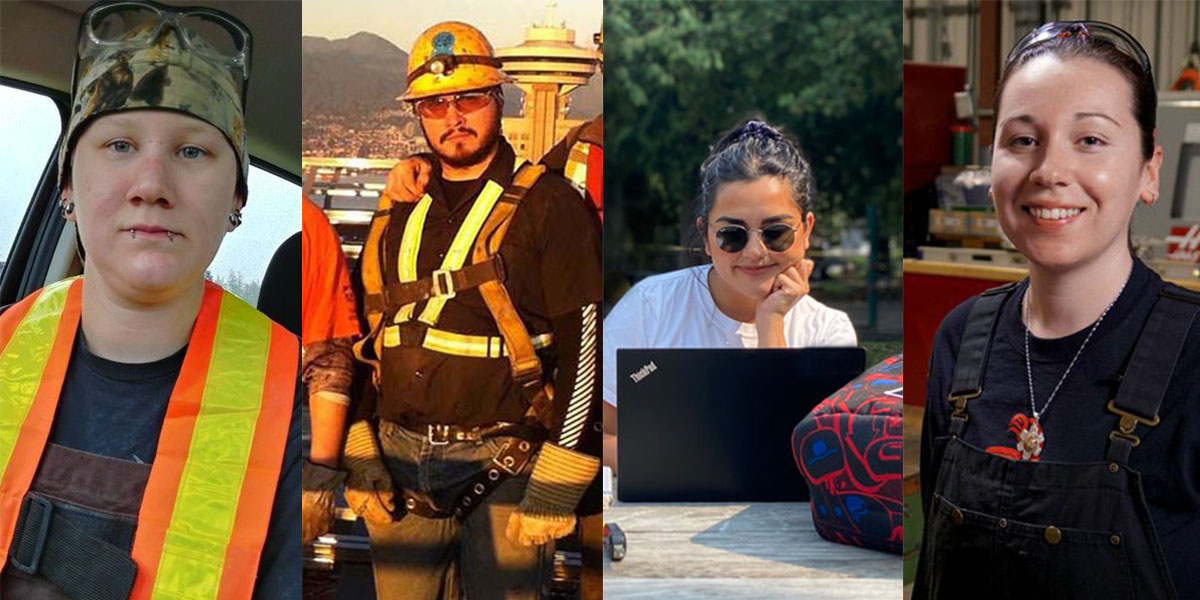
 5.
5. 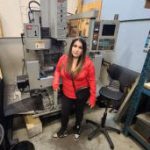 6.
6. 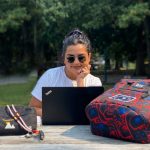 7.
7. 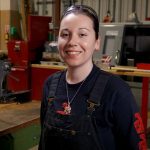 8.
8.
My name is Curtis Wright, I am part of the Squamish Nation as well a a BCIT Alumni. I came to the Burnaby campus in 2003 after speaking with members of the Indigenous Department. I enrolled in a 6 month diploma program which at the time was called “Electricity & Industrial Electronics for Aboriginal People” this program ultimately got me interested in starting my electrical apprenticeship. I completed my first 3 years of apprenticeship at the Burnaby campus then finished my 4th year at Okanagan College. Upon my program was completed
I obtained my Red Seal electrical ticket in 2009. I owe a lot to the people of the Indigenous Department for helping me through the process of finding a career that interested me as well as helping me with the school enrolment. I try to share my story with other Indigenous students to show them that the trades can provide you with a full filling career and that BCIT is a great institution to get you started down the right path. I give many thanks to BCIT and its helpful staff and associates.
This is awesome to hear of your experience, Curtis. I was part of the team at BCIT’s Aboriginal Programs and Services back in 2003 along with Joanne Stone Campbell, Leanne Joe, Celeste Spinks, Elder Bob George, Elder Rose Point, Gerry Oleman, and others. This program was the brainchild of Brenda Ireland, who worked tirelessly to get Indigenous students into trades and technology programs at BCIT. Warms my heart to hear of your experience. Kim Cameron
I wasted my first 2 years at Langara College when Department of Indian Affairs and Northern Development tried to make us Native students give up on our post secondary education and career goals. Then I attended for 2 more years and got the pre-requisites for the Forestry program then transferred to BCIT. I got accepted into the Forestry program at BCIT in September 1977. I instinctively knew that the students were going to close me off but I told myself that I was going to get a career and nothing was going to stop me! Then I failed there 2 times for medical reasons but I wouldn’t give up because I got so close to finishing that it would have put all those years to waste! Then I applied what I learned about life during the hard times to saving another Aboriginal from suicide and getting her a career. Because I did that we helped her youngest brother get a career too!